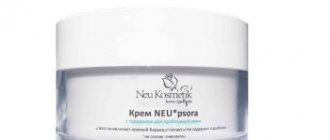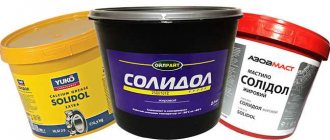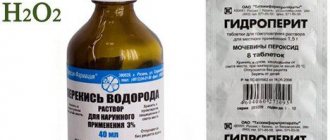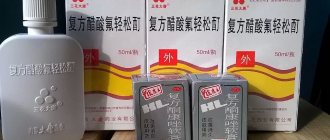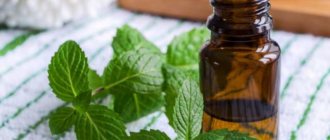From its introduction until the end of the 20th century, Solidol grease was extremely popular. It was used for most components of industrial equipment, agricultural and automotive equipment.
The volume of production of technical grease in different years ranged from 30 to 70% of the total quantity of all produced greases.
It is not surprising that such a name became a household name - any grease was called (and is still sometimes called) grease.
In this article we will take a closer look at the legendary lubricant and find out what grease is made from, what types it comes in, its advantages and disadvantages, where and how it is used.
What is Solidol?
The name "solidol" comes from the Latin words solidus
, i.e.
hard, dense and oleum
, i.e. oil. Another outdated name for grease is “grease”.
The basic industrial liquids that make up grease are petroleum oils, i.e. petroleum fractions selected after the production of gasoline. A calcium or sodium soap thickener is added to these oils.
Depending on the raw materials used, it can have colors ranging from light yellow to dark brown.
Thus, grease is a general purpose plastic anti-friction lubricant.
The main functions of technical solid oil are to reduce friction and prevent intense wear of rubbing parts.
Types of Solidol
Based on their origin and production method, solid oils are divided into:
- Fatty – they use fatty acids from vegetable oils as thickeners
- Synthetic – synthetic fatty acids are used in their production
The first ones (Solidol-Zh) have slightly higher performance and are considered to be of higher quality. At the same time, artificial synthetic solid oil (Solidol-S) has superiority in some indicators and is much cheaper, therefore it is also widely used for servicing industrial equipment.
Based on the method of application and consistency, solid oils are divided into ordinary and press solid oils. The latter are characterized by lower viscosity and are used for pumping into components through grease nipples or using centralized lubrication systems.
It is known that solid oil does not have a very high load-bearing capacity. To obtain higher properties, graphite was added to the lubricant.
One of the most popular such materials is grease with graphite - silver-colored lubricant USsA. Due to the addition of 10% coarse graphite powder to its composition, it has increased extreme pressure properties and conductivity.
It was noticed that solid oil, originally conceived as an anti-friction lubricant, has a healing effect on the human body for certain diseases. It began to be used not only for technical, but also for medical purposes. This is how a division into technical and medical solid oils appeared, which undergo an additional thorough cleaning procedure during production.
Contraindications
Medical solid oil is well tolerated by the body of patients of various age groups, but still, like any other medicine, it has its medical contraindications. They are as follows, namely:
- State of pregnancy and lactation. Women who are carrying a child under their hearts and breastfeeding their baby should refuse to use medical solid oil in its pure form and ointments made on its basis. The caveat is that despite all the thoroughness of cleaning the medicine from chemical impurities, a small part of them still remains in the oil base of the drug. They are not dangerous for an adult, but they can cause significant harm to a child’s body. First of all, the liver and kidneys will be affected, as the main organs that filter and utilize pathogenic components.
- The use of herbal medicine. It is not advisable to simultaneously treat dermatological diseases with decoctions, baths, tinctures and extracts of medicinal herbs and grease. This will lead to a decrease in the therapeutic effect of both types of medications.
- Ultraviolet treatment. After treating the diseased areas of the skin with medical grease, a fatty film forms. If at the same time the patient also receives therapy with direct ultraviolet rays, then the result of such treatment may result in a burn and inflammation of the skin. The thing is that ultraviolet rays can penetrate through this greasy layer of solid oil, but they will not return back. The result is a greenhouse effect on the wound surface and irritation of diseased skin.
- Age up to 12 years. Before reaching this age barrier, children should not receive treatment with grease for the reason that the ointment can clog skin pores that have not yet opened and subsequently lead to their expansion. This threatens with secondary inflammatory processes, infection, formation of boils, carbuncles and purulent abscesses.
- Oncology. Malignant formations on the surface of the skin, as well as wound and ulcerative surfaces formed as a result of the presence of a tumor, are not subject to therapy with solid oil. In such cases, chemicals, cytostatics, radio irradiation, and in some cases surgical intervention will be required.
We also recommend reading: folk remedies for treating psoriasis, how the disease is transmitted and whether it is contagious, how to treat psoriasis on the elbows.
Before starting treatment for dermatological diseases using solidol, it is imperative to first consult with your doctor. It is quite possible that a specialist will identify other health problems that will exclude the possibility of using ointments made on the basis of grease.
Technical characteristics of Solidol
The main technical characteristics of grease, as for any grease, are usually the operating temperature range, resistance to various environments, as well as a number of additional parameters and properties.
The upper threshold of operating temperatures does not exceed +65…+70 °C, and the lower threshold is about -25 degrees. However, this temperature does not ensure complete freezing. In loaded components of powerful mechanisms, this material can work even at -50 °C.
It is noteworthy that when melting and subsequent solidification, the lubricant loses many of its performance characteristics and is unsuitable for further use.
One of the most important indicators for solid oil is its high resistance to water and moisture.
Water is one of the components of the lubricant and acts as a stabilizer in it. Solid oil practically does not dissolve in cold water, and upon contact with it it becomes covered with a whitish coating from interaction with calcium salts. The water content in grease does not exceed 3%.
Solid oils have high colloidal stability and practically do not release oil. Synthetic solid oils are more stable in this regard, which allows them to be stored for a long time (up to 5 years or more).
Advantages of technical Solidol
- The main advantage of technical grease over other lubricants is its excellent price-quality ratio
- It has characteristics sufficient to service most components operating both under normal conditions and under the influence of increased loads, water, moisture and dust
- Solidol is not a toxic substance
- The lubricant can work under conditions of exposure to dust, rain, snow, and sun, and has high protective anti-corrosion characteristics. This allows the use of grease as not only anti-friction, but also preservation compounds
Properties of ointments
Solidol ointments for psoriasis have been used for many decades in a row. Modern preparations contain medical purified solid oil, devoid of toxic impurities. Additional components of the products are designed to enhance the effectiveness of the main substance. The combination of substances beneficial to the skin helps to achieve the following tangible improvements:
- peeling of the skin is reduced, thus reducing the area and number of psoriatic plaques, the body is cleansed;
— itching and burning of the affected areas of the skin subsides;
- inflammation is reduced due to the antiseptic effect of the agents;
— the regeneration process is accelerated, which promotes the healing of wounds and ulcers.
The only disadvantage of these drugs is the fact that therapy takes some time; you should not expect instant results.
Many people prefer to use homemade products. Read about how you can make ointment for psoriasis using solid oil at home in this article. And our review today includes ten of the most effective products that can be purchased at the pharmacy.
What is the difference between Solidol and Litol?
Solidol and litol are the most common and well-known greases in Russia. However, not everyone knows how these lubricants differ from each other and in which cases solid oil can and should be used, and in which cases it should not be used.
To dot the i's
"in this matter and to understand that litol is not a substitute (analogue) of solid oil in all cases, let us consider the main differences between lithol and solid oil.
Lithium soaps are used as a thickener in lithol, and calcium or sodium soaps are used in solid oil. The thickener, as is known, determines a set of basic physical properties of lubricants.
The upper limit of the operating temperature of lithium greases is about +130 °C, while for calcium grease it is only about +70 °C.
Solid oil is more water resistant than lithols; it is not washed out of units, so it can be used in conditions of constant exposure to moisture.
For some structural materials, lithol is aggressive in the presence of moisture, while solid oil is more inert and does not damage parts, for example, made of aluminum and its alloys.
In terms of cost, solid oil is superior to lithol - it is 2 or more times cheaper.
Now that the main differences are known, you can easily make a choice in favor of one material or another for various applications.
Causes of the disease
Psoriasis occurs due to dysfunction of the epidermis, which normally should be renewed once a month. With scaly lichen, this happens faster; the skin tries to rejuvenate in a maximum of 4 days. The reason for the accelerated process is the inflammatory process. This provokes new and unformed cells to come out, which leads to deterioration of the outer layer and scaliness. The process constantly accompanies a person with periodic remissions and exacerbations. At night, the patient unconsciously scratches the affected areas.
Factors influencing the occurrence of the disease are:
- disruption of the immune and endocrine systems;
- heredity;
- past illnesses;
- bad ecology;
- stress, mental stress.
The above circumstances are not the cause of the disease; they only provoke the occurrence of psoriasis, but do not affect the deterioration of well-being. The discomfort is caused by itching and the appearance of the skin. It is most difficult for the patient emotionally, because he has to experience negative attitudes and unpleasant looks from other people. The unattractive appearance prompts you to look for remedies that will help cure psoriasis.
Application area
The scope of application of solid oil is determined by the properties, advantages and disadvantages that we discussed above. Solid oil is not recommended for lubricating components and mechanisms that are exposed to high temperatures. However, it works great in wet conditions.
Cars
Solid oil is used when servicing cars to lubricate unloaded and lightly loaded sliding friction units - door hinges and locks, latches, trunk and hood locks, locking mechanisms, window lift units, pedal bushings, seat slides, levers (for example, hand brake).
In domestic cars of early modifications, for example, GAZ-21, GAZ-24, it was necessary to frequently lubricate the front suspension joints. Maintenance was carried out by spraying with grease.
Solid oil is practically not used on modern cars, since it is incompatible with plastic and rubber materials, which are widely used in vehicle components.
Mechanical and power tools
Solid oil is effective as a lubricant for many mechanical and electrical tools. You just need to remember the low threshold of upper operating temperatures and do not use the composition in high-speed mechanisms that can become very hot.
Thus, it is not recommended to put lubricant in the gearbox of an angle grinder or drill. At the same time, solid oil is quite suitable for lubricating hand-held mechanical tools and low-speed drives, for example, winches, hoists, and vices.
Industry
In industry, solid oil has found wide application in various equipment units. It is used not only as a lubricant, but also as a preservative.
The grease is used to lubricate gate hinges, locks, and various mechanisms located in the open air.
Belt conveyors, conveyor lines, lifting mechanisms, hinges, hydraulic rods, bearing surfaces of rotary devices, gears and low-speed bearings of large diameters, powerful chain drives, units equipped with grease nipples are mostly still serviced with affordable, effective and cheap solid oil.
This composition has excellent preservative properties and reliably protects metal working tools, machines and mechanisms from corrosion. It is especially in demand for protection during storage of parts made of high-speed steels.
Country applications
In dacha conditions, solid oil also turns out to be extremely useful. It is used to lubricate garden mechanisms, wheel axles of garden carts, pumps, and working tools.
Parts and tools treated with this lubricant are stored for years and decades under conditions of exposure to moisture over a wide temperature range.
Another unusual use of the composition is as a garden varnish. It is used to lubricate fresh cuts of trees and shrubs, preventing their diseases and damage.
Medicine
Many people have heard about the use of solid oil to treat various human diseases. However, it should be borne in mind that for these purposes the composition used is not the one that is used to lubricate various mechanisms.
Medical grease has almost the same composition and is prepared using similar technologies from natural fatty acids, but, unlike conventional lubricant, it is then thoroughly cleaned. Purified solid oil is used to heal wounds, ulcers, abscesses, and treat psoriasis.
Currently, the industry produces a huge number of greases of various compositions, purposes, and areas of application. In terms of performance properties and characteristics, they are much superior to Solidol. However, due to its minimal cost and its versatility, this legendary lubricant is still in demand and is produced by numerous manufacturers in huge quantities.
